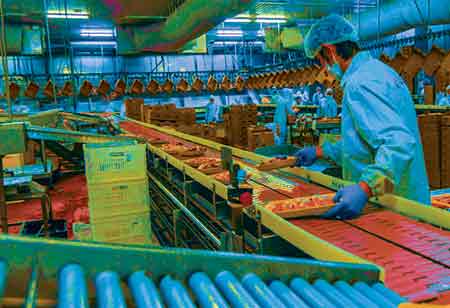THANK YOU FOR SUBSCRIBING
Be first to read the latest tech news, Industry Leader's Insights, and CIO interviews of medium and large enterprises exclusively from Food and Beverage Tech Review
Why Automation in the Food Processing Industry is a Great Idea
COVID has created an unusual scenario for employers in the food processing industry during the past few years.

By
Food and Beverages Tech Review | Thursday, June 23, 2022
Stay ahead of the industry with exclusive feature stories on the top companies, expert insights and the latest news delivered straight to your inbox. Subscribe today.
One of the greatest issues facing the food sector is how to best serve customers in the face of constant change. It is essential to strike a balance between automation solutions and humans.
Fremont, CA: COVID has created an unusual scenario for employers in the food processing industry during the past few years. Once this highly infectious virus breaks out at a processing facility, it can wipe out an entire division. These outbreaks make it difficult to locate enough labor to maintain output. In addition, the repetitious nature of some tasks might be off-putting. A broad list of challenges continues to keep food processing industry businesses on their toes, like inflation, supply chain problems, and hiring challenges. In this pandemic, however, a common theme connects these four: automation.
Why is automation a great idea in the food industry?
People are still needed to operate the machinery.
Automation will not displace skilled work, as humans are still required to ensure the effective operation of specialized equipment. A processor cannot just add a robot and stop there. As long as we must ensure the quality of the things we process, we will always require human labor.
Workers are quitting the labor as they age.
Numerous seasoned employees are retiring, leaving no one to educate and advise younger employees. Some organizations prefer to grow their labor, which means they are educating current employees to replace those departing. Launching to assist are programs like FITT (Food Industry Technician Training).
Virtual service calls are becoming increasingly prevalent.
With the pandemic, virtual services in the industry increased. Due to the fact that service technicians cannot physically visit the plants, the majority of service calls are done remotely. A person performs manual labor to address what must be done to fix or troubleshoot the equipment. As automation rises, more machines will require maintenance.
Some tasks benefit from being automated.
Some tasks, such as preparing sandwiches in 38-degree weather, are better suited for automation. There are not many applicants for those positions. High turnover can occur. Automation can assist in closing these gaps. New product handling innovations, such as end-of-arm tooling, are emerging. In the meantime, employees currently occupying these occupations can remain employed and be offered the chance to advance to more skilled employment.
I agree We use cookies on this website to enhance your user experience. By clicking any link on this page you are giving your consent for us to set cookies. More info







